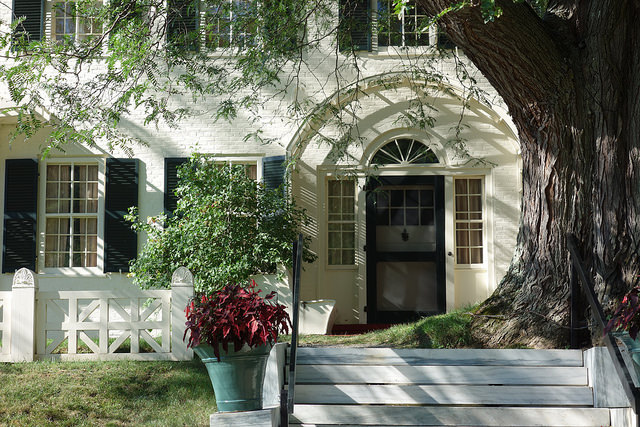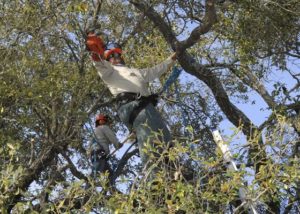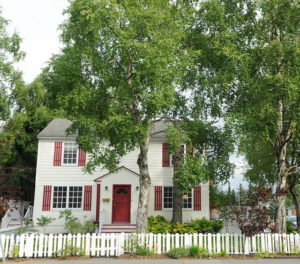Shade trees can cut the heat, and your electric bill, too

A burly shade tree in Cornish, NH. Photo: Putneypics, Creative Commons, some rights reserved
Sometimes it’s good to have a few burly associates for protection, because when the heat’s on and you need to lie low for a while, you can always turn to those shady characters for relief. You know the ones I mean – those big guys with solid builds that no one pushes around. Yeah, the trees. They’re cool.
On a scorching bright day, any shade is welcome. If you’re lucky enough to have mature trees around, not only can you get a break from the sun, but the air temperature will be degrees cooler than out in the open; natural air conditioning.
Speaking of which, if you use an air conditioner, having shade trees on the south and west sides of your home will reduce your cooling costs by a minimum of thirty, and possibly as much as fifty, percent. It’s like getting Hydro rebate. Deciduous trees are ideal because they shield you in summer but allow sunlight through in winter.
Caring for shade trees

In extreme heat, most photosynthesis occurs in partly-shaded leaves, so don’t prune the inner canopy too aggressively. Photo: Harold China, U.S. Air Force
On those blistering summer days when you think it’s too hot to work outside, you’re not alone; trees share your outlook. Photosynthesis, that remarkable process that turns carbon dioxide and sunlight into sugar (thereby keeping the trees alive) and oxygen (thereby helping keep us alive), does not work well above 86 degrees F. (30 degrees Celsius). All that solar energy going to waste!
This is why a tree’s inner canopy is essential. Far from being unlucky residents of a less-desirable neighborhood, leaves shaded by upper branches are key players in a tree’s survival, as they’re the only ones on the job when it’s too hot for their upstairs neighbors to work. So it’s best not to get overly enthusiastic with pruning. Trees don’t want their inner canopy “cleaned out.”
Hopefully you’re drinking plenty of water in the summer heat. It might surprise you that trees can run short of water. While we tend to think tree roots dive deep in search of a cool drink, 90% of tree roots are in the top 25 cm. of soil, and 98% are in the top 46 centimetres.

White birch are especially prone to water stress. Photo: Wonderlane, Creative Commons, some rights reserved
Species such as birch, ironwood and hemlock are especially prone to water stress, but others are renowned for their drought-tolerance. Bur oak (Quercus macrocarpa) is a stately, long-lived (800+ years) native tree which oddly enough tolerates intermittent flooding as well. Black maple (Acer nigrum) is very similar to sugar maple, but with slightly fuzzy leaves that are better at conserving water. Hackberry (Celtis occidentalis) is another native tree that can withstand prolonged water shortages. However, even these tough species have their limits.
Lawns recover from severe water shortage in a matter of weeks. Trees, however, take years. Drought stress weakens a tree, making it more vulnerable to diseases and insects. While many shady characters don’t take well to a good soaking, your tree will appreciate a thorough weekly drench. Actually, its survival may depend on it.
Wishing a healthy, hydrated summer on the shady side of town for you and your associates.
Paul Hetzler is a horticulture and natural resources educator with Cornell Cooperative Extension of St. Lawrence County.
Tags: drought, extreme heat, forestry, weather







